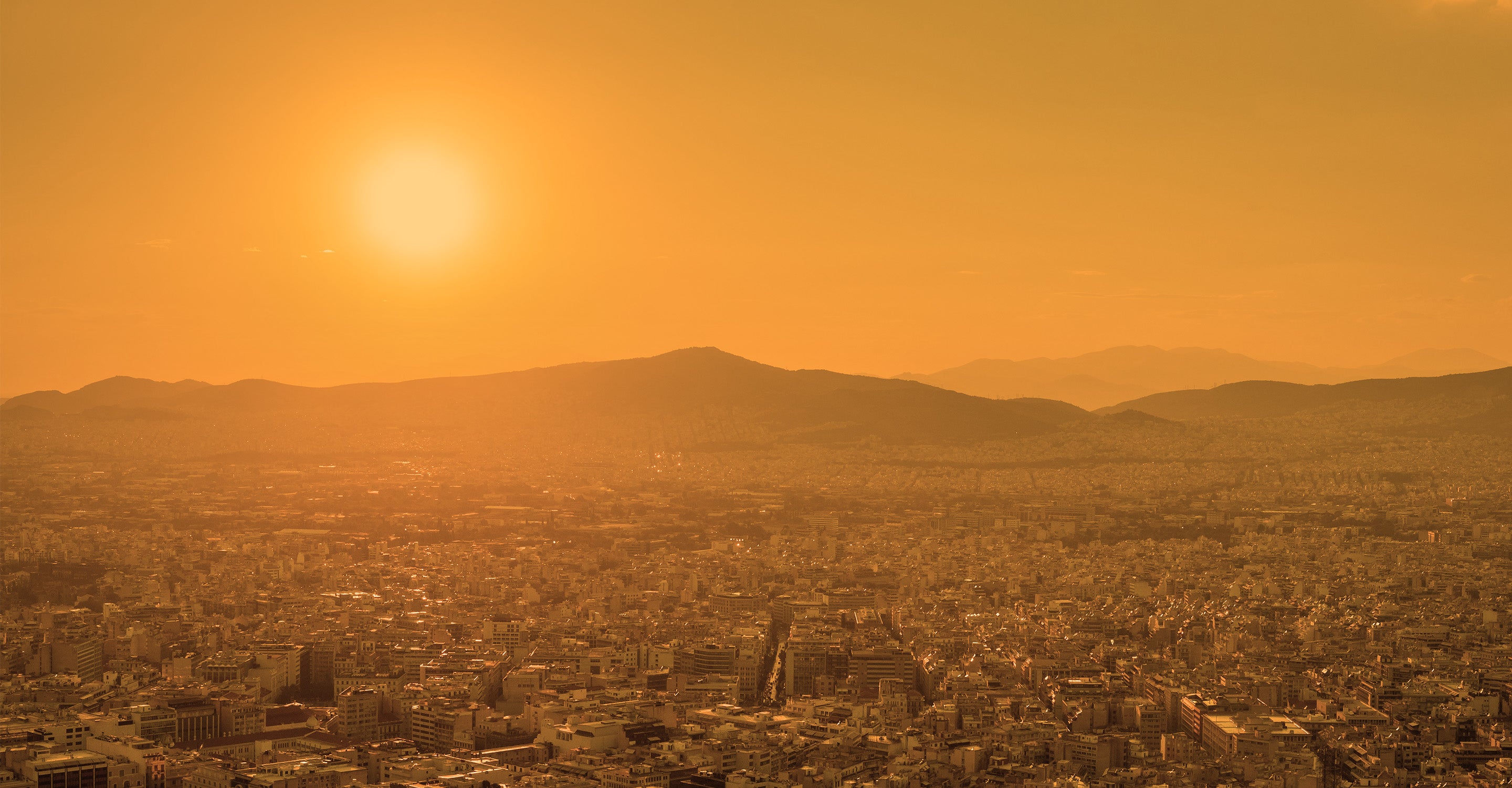Chandigarh air quality map
Live air pollution map of Chandigarh
36.7K people follow this city
Full screen
Contributors category
0
Government
0
Educational
0
Non-profit organization
0
Corporate
0
Individual
0
Anonymous
Station(s) operated by

*IQAir’s AQI data modeled using satellite data. Learn more
Health Recommendations
| Sensitive groups should reduce outdoor exercise | |
| Close your windows to avoid dirty outdoor air GET A MONITOR | |
| Sensitive groups should wear a mask outdoors GET A MASK | |
| Sensitive groups should run an air purifier GET AN AIR PURIFIER |
Chandigarh does not have air sensor data
Be the first to measure and contribute air quality data to your community.
Understand air pollution and protect yourself
Chandigarh MAP AIR QUALITY ANALYSIS AND STATISTICS
What are the main causes of high readings for the air pollution map in Chandigarh?
The main causes of higher US AQI readings that show up on the air quality maps, or air pollution maps as they are also referred to, stem mainly from combustion sources. To name some of the more prominent ones (for educational purposes as well, because these sources are the main ones all around the world), they include dust given off from construction sites and road repairs, exhaust fumes from cars or motorbikes (with larger or heavier freight vehicles often being bigger offenders when contributing to higher air quality map readings), as well as emissions from industrials sites and power plants, and anywhere that sees burning or a form of combustion take place.
How do air pollution maps help users to avoid pollution exposure in Chandigarh?
As has been mentioned in various small parts throughout the rest of the article, a prominent way in which the air pollution maps can help aid users to avoid breathing in more dangerous clouds of pollution in Chandigarh and indeed much of India, is by showing more precise locations on the map as to where pollution spikes are taking place. Whilst they may have aberrations due to meteorological factors distorting the results (such as heavy wind currents blowing highly polluted air in one direction, causing air quality monitoring stations to show excessively high readings, whilst a mile or so down the road the air may be considerably cleaner), they are for the larger part, accurate and helpful. By keeping up to date with the air quality maps for Chandigarh and others in India and South East Asia, users can take in the information and make decisions on where to go in the city which ultimately can affect how much pollution they breathe daily. When added up over time, this can have significant impacts on reducing pollution-related ailments.
What do the air quality readings explain about air contamination in Chandigarh?
As mentioned, numerous times throughout the article, the readings that show up across the air quality map for Chandigarh are given in the form of US AQI. Some areas throughout Chandigarh contain much more prominent pollution hotspots (with anywhere that sees large-scale human movement or industrial activity taking place often necessitating the monitoring of air pollution levels, as shown on the air quality map above. This is true for many major cities throughout the world, beyond just Chandigarh and India), and thus can fluctuate noticeably throughout a single day as well as throughout the year. To go into what one may learn from observing the readings present on the air quality map above for Chandigarh, it is important to know how the US AQI figure is formed, or what pollutants it is formed from rather. Chandigarh also has its city page, which is linked to the air quality map page.
On the regular city page, the readings are forecasted for the next few days, as well containing graphs that show the concentration levels of different pollutants. Data for such concentration levels are becoming more concise each year, and as mentioned above, the lower number of air quality monitoring stations for Chandigarh will also likely increase in coming years, due to further demand for information regarding how clean, or polluted the air is. This is a global phenomenon, with many studies having shown the highly detrimental effects that pollution can bring to those that are exposed to higher levels of pollution, with some of the chemical compounds in the US AQI figure having prominent effects on many people, triggering pre-existing health conditions or causing new ones to emerge, particularly amongst the elderly, and also of great concern for younger children, as pollution-related health problems (particularly those that affect the respiratory tract or nervous system) may turn into lifelong issues that need to be dealt with.
The pollutants that go into forming the US AQI readings for Chandigarh, as displayed above on the air quality map, are ones such as nitrogen dioxide and sulfur dioxide, both of which can be released from the combustion of fuels, with nitrogen dioxide being particularly prominent in areas that have a higher concentration of vehicles in use (and as such, may affect people that live near to busy roads, highways or other areas that see a large influx of cars and other vehicles during rush hour times). Health problems that can be caused by breathing these chemicals include shortness of breath, chest pain, headaches, nausea and vomiting, and many others that are also commonplace when exposed to the other plethora of particles or chemicals found in the air. The other pollutants that go into forming the US AQI figure are ozone (usually referred to as smog, and can form easily once again in areas that see a high number of vehicles passing through them, particularly on very sunny days, or times when the UV index is high, which forces a chemical reaction to take place amongst many gases, causing ground-level ozone to form. This will show up on the air quality map as a heightened US AQI reading, and can also cause many health issues to occur. Ozone is a vital part of the upper atmosphere, but on ground level, it is a dangerous pollutant to be exposed to). The last few pollutants that form the US AQI figure for the air quality map readings are carbon monoxide, along with the two main forms of particle-based pollution, PM10 and PM2.5. Carbon monoxide, like many chemical compounds, gases, or particles in the air, can emerge from combustion sources, with factories, power plants, cars and fires all putting these pollutants into the air. The reason why these pollutants have been delved into so much is that for users of the air quality maps, and people who are reading this, a clearer insight may be gained into what pollutants individuals are breathing when they are in areas of Chandigarh that are showing elevated US AQI readings on the air quality map.
As is commonly shown on the pollution map, the air quality for Chandigarh is not overtly bad and as such many people will not have to worry as much when compared to inhabitants of more severely polluted cities in the world. However, these readings can jump up rapidly, and when they do, all of the above-mentioned pollutants will be found in much greater concentration levels, going up in danger level as the US AQI classification goes beyond its 'moderate' ranking to ones further up. Although rarer, it can occur, and as such air quality maps can be referred to by people to know what pollutants they are breathing, and the appropriate steps to take when pollution levels are high. This includes wearing fine particle filtering masks, avoiding outdoor strenuous exercise, and keeping doors and windows closed.
Which people can benefit the most from using air quality maps in Chandigarh?
Those that are more at risk or vulnerable to pollution-related health issues would benefit from the use of air quality maps, to ascertain the daily pollution levels. These vulnerable groups include those with pre-existing health conditions, mainly those of the heart and lungs. Children are also vulnerable, along with babies, pregnant mothers, individuals with compromised immune systems, as well as those with a hypersensitive disposition toward certain chemicals or particles in the air. The use of pollution maps to avoid areas with higher readings can be especially helpful for such groups, as well as aiding the general population.









